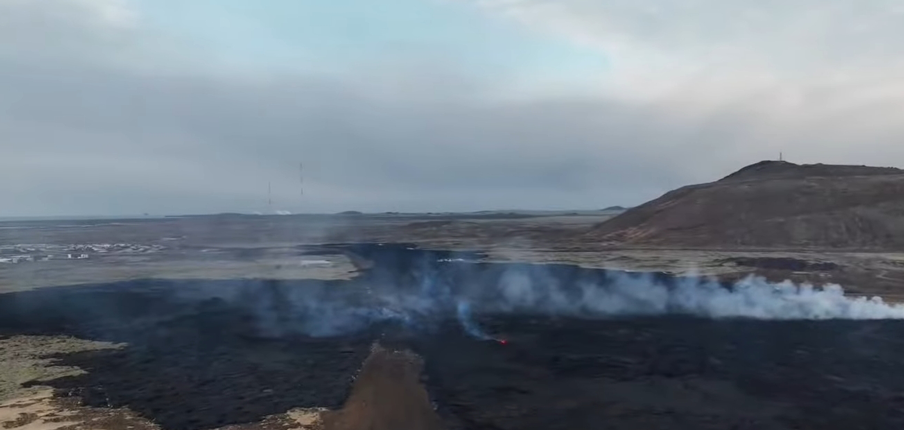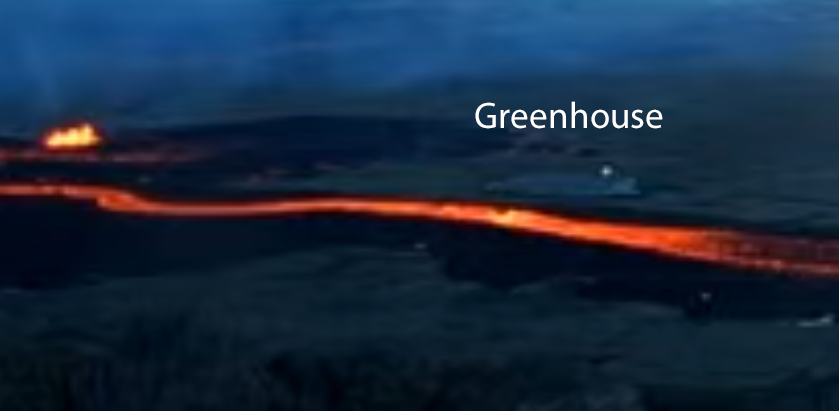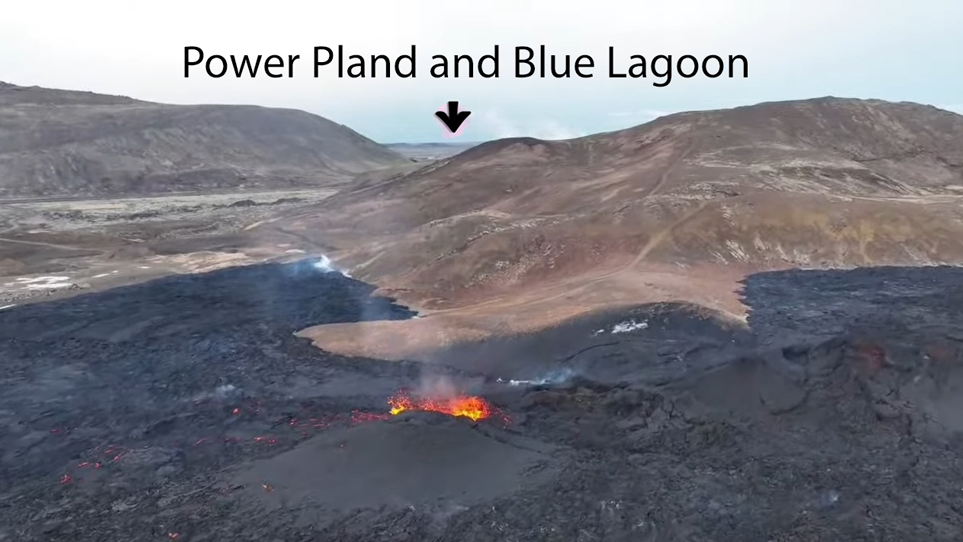Iceland experienced its most recent Reykjanes Peninsula Volcanic System eruption near Grendavick this weekend and there is a lot of news to go through.
Grendavick Mostly Spared
The eruption began early Sunday and began with roughly 1/6 the output of the December eruption but was considerably closer to the town of Grendavick. The fissure initially erupted just north of the barrier berm that had been constructed, but proceeded to expand southward and cut a small portion through the barrier wall. Additionally, a smaller fissure opened around 200 meters northwest of the houses of Grendavick. Sadly, a few homes were lost to the lava flows and fires.
In spite of the lost homes, there is some excellent news from the eruption so far: The barriers seem to have worked, the crews were able to salvage their vehicles to build new ones, the greenhouse (which is an important part of the food supply for the area) was protected, the Blue Lagoon and the Svartsengi Power Plant were spared, and the plan of action moving forward seems to be more solid now.
The Barrier Berms Worked
While the berms were cut slightly by a protrusion of the fissure openings, most of the lava was diverted to the west and away from the populated areas. Since the fissures that opened up near Grendavick only had a very limited volume of magma to pull from, the flow that actually reached the houses was minimal and damaged only a few homes. Sadly, those homes will be a complete loss, but the story is that there would have been many more if not for the engineering feat to prepare the barrier walls to begin with.

The Crews were able to salvage equipment
In a heroic effort,t he engineering crews were able to rescue the construction vehicles they had been using to construct the barriers. In the initial earthquake swarm that led to the eruption, the crews and all first responders were told to evacuate and leave their vehicles. Crews left them on top of the barriers where they had been working. When the lava began to erupt and it became evident that the vehicles could be in harms way, the crews mobilized and quickly rescued the vehicles to finish closing off the barrier along the road to Grendavick. This was a big deal for two very important reasons. There are the most powerful and most expensive earth movers in the entire country of Iceland, and the road to Grendvick was still opened.
The crews quickly got in the vehicles, which were so close to the lava river that glass shattered on one vehicle from the heat. Never the less, the teams were able to rescue the vehicles and close the remaining gap on the road right as the pool of lava approached. The effort of this team likely saved a large portion of the town and definitely saved a lot of infrastructure leading to it. As it is, the lave did cover and destroy a portion of the road to Grendavick and the main water supply from the Power Station, but if that is the full extent of infrastructure damage, then that is a win considering what the alternatives were.
The Greenhouse was saved.
Just northwest of the town there is a large Greenhouse that produces a lot of fruits and vegetables that would be otherwise impossible to grow in the Iceland climate. While it wasn't the topic of many conversations leading up to the eruption, it became clear that the civil defense team had been very deliberate in their placement of the barriers and they were perfectly positioned to divert lava away from it. As of writing this, the greenhouse is still intact and has sustained no major structural damage from the lava. This is just another of many examples of how the barrier project was able to protect the infrastructure of the Peninsula from the most recent volcanic eruption. If the volcanic experts are correct, these proven methods will be needed a lot in the coming years.

The Blue Lagoon and the Geothermal Power Plant were spared
Another month, another time the Svartsengi Power Plant and the Blue Lagoon were spared damage from the magma positioned directly under them. With the barriers placed between them and the primary eruption hazard, there was already a strong defense in place. Fortunately, the latest eruption of the Reykjanes Peninsula was positioned well east of the barriers and was also downhill from most of the power plant infrastructure. It should be noted that there is now and active effort in place to ensure that both are completely safe and available to produce power for locals and provide employment to those catering to the strong tourist economy of Iceland.

Plans Moving Forward.
The barriers have shown themselves to be an imperfect but effective method of diverting lava from populated areas and critical infrastructure. Even with the fissure erupting through a portion of the berm, the barriers were able to divert the vast majority of the lava to areas where it would cause the least damage. What is also evident, is that the diverted lava has not created a barrier of its own to deflect and divert future flows from this coastal fishing village.
Due to the successful showing that these barriers have made, it is being suggested to authorities and Iceland to begin making multiple diversion paths around and even within urban areas and positions of critical infrastructure. It will be impossible to know the exact position that a volcanic fissure will erupt from, but making multiple berms in a bullseye pattern around areas of concern will ensure that it can be diverted in future eruptions. The method has implications far beyond Iceland. In Hawaii and other areas where basaltic lava flows are common, this technique can be refined to save and protect significant areas of interests.
Being the Land of Fire and Ice, Iceland will continue to learn from these eruptions to develop infrastructure that can be implemented in areas across the globe.

